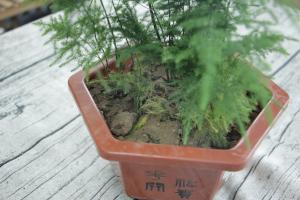Can You Boost Farming to Plant Trees?
Farming and agroforestry are often seen as opposing forces in the quest for sustainable land use. While farming focuses on maximizing crop yields, agroforestry emphasizes the benefits of integrating trees into agricultural landscapes. However, there is growing evidence that the two can be complementary, with agroforestry practices boosting agricultural productivity and helping to create more resilient and sustainable farming systems.
The Benefits of Agroforestry
There are many benefits to integrating trees into agricultural landscapes. Trees can help to regulate the local climate, increase soil fertility, and protect crops from wind and sun damage. They also provide important habitats for beneficial insects and other wildlife, which can help to control pests and improve soil health. Additionally, trees can help to diversify farm incomes, through the sale of timber, fruits, and nuts.
Agroforestry systems can also help to create more resilient and sustainable agricultural landscapes. By diversifying crops and incorporating trees, farmers can reduce their reliance on energy-intensive inputs like pesticides and fertilizers, and build more resilient farming systems that are better able to adapt to droughts, floods, and other climate-related challenges.
The Challenges of Agroforestry
Despite the many benefits of agroforestry, there are also several challenges associated with integrating trees into agricultural landscapes. One of the main challenges is the lack of knowledge and skills among farmers, who often lack the technical expertise needed to manage trees alongside crops. Additionally, there are often institutional barriers to the adoption of agroforestry, such as access to land and credit.
Another challenge is that trees can compete with crops for water and nutrients, especially in dryland areas. This can lead to decreased crop yields if the trees are not properly managed. Additionally, some tree species can be invasive and can have negative impacts on local ecosystems and biodiversity, if not carefully chosen and managed.
The Role of Technology
Technology can play an important role in overcoming some of these challenges and promoting the adoption of agroforestry. For example, precision agriculture techniques can help farmers to more effectively manage both crops and trees, by using data on soil moisture, nutrient levels, and other variables to optimize plant growth and increase yields. Additionally, remote sensing technologies like drones and satellite imagery can help farmers to monitor crop health and detect potential problems before they become too severe.
Another technology that can help to boost agroforestry adoption is mobile apps. Many apps have been developed specifically to help farmers learn about agroforestry practices and connect with other farmers who are already using these techniques. These apps can also provide farmers with information on market opportunities for agroforestry products and link them with buyers.
The Importance of Policy and Funding
Finally, policy and funding are critical to scaling up agroforestry adoption. Governments can provide incentives and technical assistance to farmers to adopt agroforestry practices, and can also ensure that land-use policies and regulations support agroforestry. Additionally, funding from development organizations and other sources can help to support agroforestry research and implementation, including the development of new technologies and the creation of pilot projects to demonstrate the feasibility and benefits of agroforestry.
Conclusion
Agroforestry offers a promising solution to many of the environmental and social challenges facing modern agriculture, but its adoption is still limited in many parts of the world. Technology and policy solutions can help to promote the adoption of agroforestry, but ultimately it will require a commitment from farmers, policymakers, and society at large to build more sustainable and resilient agricultural systems.

 how many times do yo...
how many times do yo... how many planted tre...
how many planted tre... how many pine trees ...
how many pine trees ... how many pecan trees...
how many pecan trees... how many plants comp...
how many plants comp... how many plants can ...
how many plants can ... how many plants and ...
how many plants and ... how many pepper plan...
how many pepper plan...
































